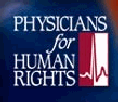Radiology - Technology Information Portal
Saturday, 10 May 2025
'Side Effect' Searchterm 'Side Effect' found in 0 term [ • ] and 9 definitions [• ], (+ 2 Boolean[• ] resultsResult Pages : • Adverse reactions on contrast agents are rare, but like all other pharmaceuticals, contrast media are not completely without side effects. Adverse effects to contrast media include allergic symptoms, anaphylactoid reactions, chemotoxic reactions, idiosyncratic reactions, contrast-induced nephropathy, iodide-induced hyperthyroidism and local tissue damage. An adverse reaction can be related to dose, the toxicity, and the physio-chemical properties of the contrast agent, for example osmolality, viscosity, and hydrophilicity. Side effects such as a metallic taste in the mouth, generalized warmth or flushing, nausea and vomiting, increase with rapid flow and large volume of the injected agent. Although venous tolerance is usually good, there have been reports of sensation like burning, stinging or numbness and of venospasm. Characterization of adverse reactions include:
•
Allergic drug reactions never occurs on the first exposure, but it can occur even with small amounts.
•
•
Idiosyncratic reactions can occur on first exposure to the contrast medium. And unlike a side effect, the reaction occurs only in susceptible individuals, probably due to a genetic or metabolic abnormality.
• View NEWS results for 'Adverse Reaction' (1). Further Reading: Basics:
News & More:
•
Radiographic contrast media (RCM) contributes important information to the diagnostic process. Actual contrast agents are safe drugs. Adverse reactions are rare, the incidence and severity of side effects decrease with the use of nonionic and low-osmolar contrast media. Adverse reactions are diverse, ranging from mild physiological disturbances to very rare life-threatening anaphylactic or anaphylactoid reactions. Users of contrast agents must be aware of the risk factors and be prepared to promptly manage adverse effects. Side effects that may occur with intravascular administration of contrast agents are also possible after administration by other paths. Increased risk to an adverse reaction includes patients with a history of a previous reaction to a contrast medium, a known sensitivity to iodine, or a known clinical hypersensitivity (bronchial asthma, hay fever, and food allergies). See also Contrast-Induced Nephropathy, Iodide-Induced Hyperthyroidism and Idiosyncratic Reactions. Further Reading: Basics:
News & More:
•
Different stages of the drug development and approval process in the USA, lead from preclinical trials (testing in animals), first application in humans through limited and broad clinical tests, to postmarketing studies.
By Dale E. Wierenga, Ph.D. and C. Robert Eaton Office of Research and Development Pharmaceutical Manufacturers Association 'In reviewing this report, it is important to keep in mind the realities of the drug discovery and development process. The U.S. system of new drug approvals is perhaps the most rigorous in the world. On average, it costs a company $359 million to get one new medicine from the laboratory to the pharmacist's shelf, according to a February 1993 report by the Congressional Office of Technology Assessment.' See also Phase 1 2 3 4 Drug Trials, Clinical Trial, Food and Drug Administration, and European Medicines Agency. •
Fractionation is the delivery of a given total radiation dose as several smaller doses, separated by intervals of time to minimize side effects.
•
Iodinated contrast agents (typically iodine-substituted benzene derivatives) are bound either in nonionic or ionic compounds. Ionic contrast agents consist of the negatively charged anion and the positively charged cation. Used components of the anion are for example diatrizoate, iodamide, iothalamate or metrizoate and of the cation the sodium or meglumine ion. The osmotic pressure depends on the number of particles in solution. Ionic contrast agents have a greater osmolarity; double that of nonionic contrast agents due to delivering more iodine atoms per molecule. Ionic contrast agents were developed first and are still in use depending on the examination. Iodine based contrast media are water soluble and as harmless as possible to the body. However, ionic agents have more side effects compared to nonionic contrast agents due to their high osmolarity. See also Ionic Dimer. Result Pages : | ||||||||||||||||||||||||||||||||||||||||||||||||||||
Radiology - Technology Information Portal
Member of SoftWays' Medical Imaging Group - MR-TIP • Radiology-TIP • Medical-Ultrasound-Imaging
Copyright © 2008 - 2025 SoftWays. All rights reserved.
Terms of Use | Privacy Policy | Advertising
Member of SoftWays' Medical Imaging Group - MR-TIP • Radiology-TIP • Medical-Ultrasound-Imaging
Copyright © 2008 - 2025 SoftWays. All rights reserved.
Terms of Use | Privacy Policy | Advertising
[last update: 2025-04-05 02:37:00]




